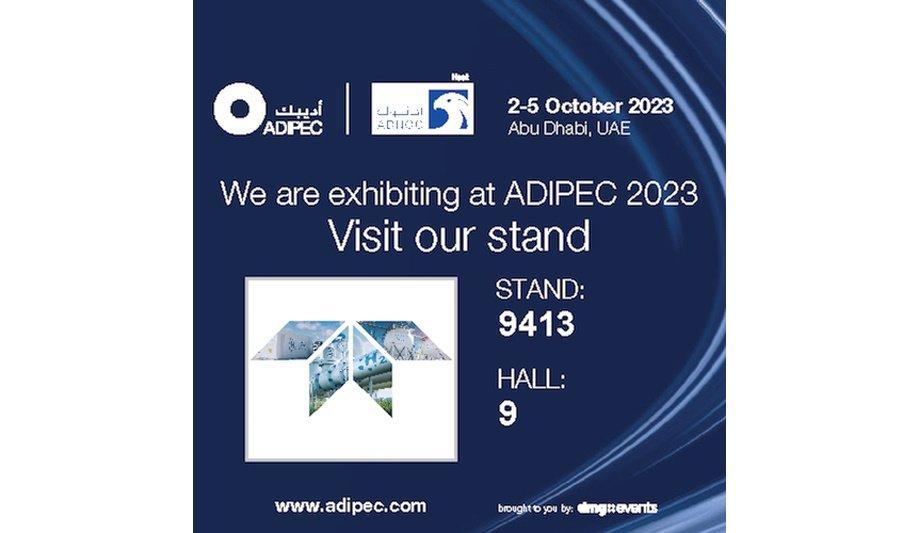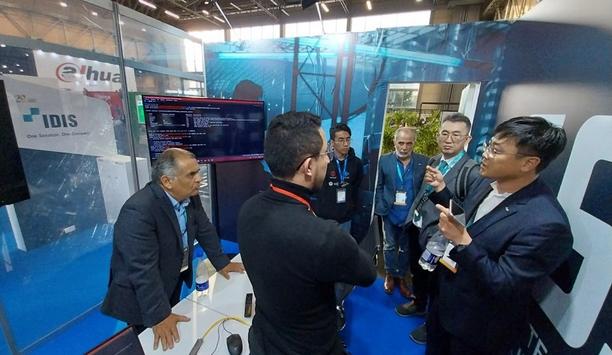Teledyne Gas and Flame Detection will not only use ADIPEC 2023 to demonstrate how its latest innovations successfully protect both people and capital assets in the oil and gas sector, but also to illustrate the company’s proactive decarbonisation drive in support of wider industry sustainability efforts.
ADIPEC (2-5 October, Abu Dhabi, United Arab Emirates) is a major international platform that looks to accelerate game-changing solutions and transformational progress for the future of energy. Acutely aware of the importance of sustainable development, Teledyne conducted its first Scope 1 and Scope 2 greenhouse gas (GHG) inventory in 2020 supported by ongoing monitoring ever since. The goal is a 40% reduction in GHG emissions across group operations (normalised for revenue) by the end of 2040.
Guarantor of ISO14001 certification
ADIPEC visitors can learn more at Booth 9413 in Hall 9, where decarbonisation will be a major theme
As part of the ‘40by40’ project, Teledyne GFD has an eclectic committee of 14 employees based at its Arras, France site who collect decarbonisation and sustainable development ideas. All ideas are subject to input from the Quality Safety Environment (QSE) department, which remains the guarantor of ISO14001 certification.
This activity ensures Teledyne GFD proudly remains the gas and flame detection partner of choice for customers seeking environmentally conscious suppliers with active sustainability strategies and targeted objectives. ADIPEC visitors can learn more at Booth 9413 in Hall 9, where decarbonisation will be a major theme.
Teledyne GFD’s new Spyglass IR3-H2-V
Another important theme will be the detection of fires started by alternative fuels such as H2
Another important theme will be the detection of fires started by alternative fuels such as hydrogen (H2). Teledyne GFD’s new Spyglass IR3-H2-V quickly detects hydrogen and other ‘energy transition’ fires, supporting rapid response efforts. A near-infrared camera provides personnel with the ability to see invisible H2 flames in all weather and light conditions. Furthermore, the detector automatically records video, providing additional means to study the cause and development of fires.
From a gas detection perspective, Teledyne Gas and Flame Detection has highly effective solutions for ammonia (NH3), such as the proven 700 series fixed gas detector with its multi-layer surge protection and pre-emptive fault diagnostics. Those interested in carbon dioxide (CO2) applications will also find the optimal solution, this time with Teledyne GFD’s GD10P fixed gas detector, which uses state-of-the-art IR gas measurement to provide a fast, reliable and accurate response.
Teledyne GFD’s portable PS200
Another showcase on the booth will be the GD1 laser-based fixed gas detector with full SIL2 third-party approval. This ground-breaking development means that the GD1 SIL2 is the market’s first open-path gas detector for hydrogen sulphide (H2S) safety-related applications. Notably, the GD1 features a unique ‘tunable’ laser diode that eliminates the environmental effects of sun, rain and fog to boost overall site safety.
The GD1 features a unique ‘tunable’ laser diode that eliminates the environmental effects
Portable solutions on display will include an enhanced version of the company’s popular Gasurveyor 700 (GS700), known as the GS700-Hydrogen, which now features the additional capability of detecting H2 in applications that include leak detection and pipeline gas testing. Teledyne GFD’s portable PS200 multi-gas compliance monitor will also take the spotlight. Compact, lightweight, water resistant and extremely robust, the user-friendly PS200 is a proven performer in hazardous locations with its ability to measure any combination of LEL, O2, CO and H2S.
Teledyne GFD MX62TP
Among the controllers on display will be the modular and flexible Teledyne GFD MX62TP, which features a large, fully interactive 10" (up to 15") high-definition colour touchscreen, 64 secure channels and a backup processor to ensure continual measurement. In addition, visitors will see the X40 low-power, multi-channel gas alarm and control system, offering easy field programming using a handheld magnet.
Aside from conventional oil, gas and petrochemical applications, visitors to the booth will discover that Teledyne Gas and Flame Detection can assist with solutions for CCUS (carbon capture, usage and storage), DAC (direct air capture), CEMS (continuous emission monitoring systems), SMR (steam methane reforming) and BESS (battery energy storage systems), for example. Call the booth to discuss these or any other requirements with the company’s experienced and knowledgeable team.



















